Journal of Plant Diseases and Protection
Scientific Journal of the "Deutsche Phytomedizinische Gesellschaft" (DPG) - the German Society for Plant Protection and Plant Health
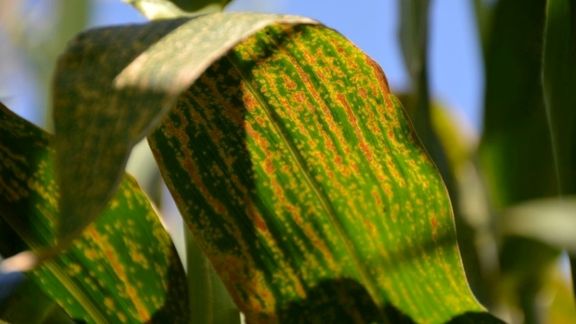
Aims & Scope
In the JPDP, we reflect the full breadth of phytomedicine. This ensures an appropriate publication medium for our members.
The Journal of Plant Diseases and Protection (JPDP) is an international scientific journal that publishes original research articles, reviews, including meta-analyses, short communications, perspectives and opinion papers dealing with applied scientific aspects of plant pathology, plant health, plant protection and findings on newly occurring diseases and pests. "Topic collections" on coherent themes often arising from International Conferences are offered.
Scientists are encouraged to submit manuscripts on virtually all aspects of plant disorders, pathogenesis, biology and characterization of viruses, bacteria, phytoplasms, oomycota, fungi and herbivores, including nematodes, mites, insects, snails and rodents, their epidemiology and diagnosis. In addition, manuscripts on the interaction with the host plants are welcome. We accept manuscripts from all over the world, but the topics should have international relevance for plant health and protection.
The editors of JPDP have a significant interest in integrated plant protection, including plant protection in organic agriculture. The work should describe the mode(s) of action and efficacy of biorationals, semiochemicals, chemical-synthetic pesticides, microbial biostimulants, and aspects of pesticide resistance. Endophyte and microbiome research related to plant protection strategies are within the scope. Furthermore, monitoring, forecasting, modelling, decision support systems and application technologies will be included. Reports on new technologies like sensor technology or manuscripts on machine learning may be submitted. Although JPDP primarily focuses on plant diseases and protection, hence the name of the journal, it also considers manuscripts on legislative aspects.
Not within the scope are:
- preliminary results of research topics (studies without independent biological repetitions, i.e. inconsecutive growing seasons, or in diverse environments, are excluded)
- findings of local interest only including variety screenings with purely local relevance
- descriptions of plant protection strategies involving active substances not relevant for the European Union
- fundamental physiological research data not connected with applicable plant protection strategies
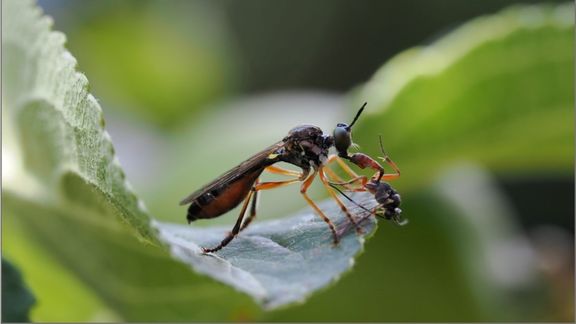
Editorial Board
Our team of associate editors consists of excellent experts in phytomedicine and is internationally oriented.
Editors in chief
- Falko Feldmann, E-Mail: Feldmann(at)phytomedizin.org
- Noemi Messmer, E-Mail: messmer(at)phytomedizin.org
Managing Editor
- Christian Carstensen, E-Mail: carstensen(at)phytomedizin.org
Associate Editors
- Kamal A.M. Abo-Elyousr, Universität Assiut, Assiut, Egypt
- Charles Adarkwah, Universität für Energie und Natürliche Ressourcen, Sunyani, Ghana
- Faheem Ahmad, Aligarh Muslim University, Aligarh, India
- Habib Ali, Khwaja Fareed University of Engineering and Information Technology, Rahim Yar Khan, Pakistan
- Sabine Andert, Julius Kühn-Institut, Braunschweig, Germany
- Christos Athanassiou, Universität Thessalien, N. Ionia Magnesia, Greece
- Djaafar Babaali, Julius Kühn-Institut, Braunschweig, Germany
- Martina Bandte, Humboldt-Universität zu Berlin, Berlin, Germany
- Ali Kashif Bashir, Manchester Metropolitan University, Manchester, UK
- Maja Bentele, Technische Universität Dresden, Dresden, Germany
- Marco Beyer, Luxembourg Institute of Science and Technology, Belvaux, Luxemburg
- Elias Böckmann, Julius Kühn-Institut, Braunschweig, Germany
- Anna Brugger, Bildungs- und Beratungszentrum Arenenberg, Salenstein, Switzerland
- José Alberto Caram de Souza Dias, São Paulo State Government Agency for Agro-business Technology (APTA), Campinas, Brazil
- Henrik-Alexander Christ, Fraunhofer Institute for Wood Research Wilhelm-Klauditz-Institut WKI, Braunschweig, Germany
- Alicia Cirujeda Ranzenberger, Centro de Investigación y Tecnología Agroalimentaria de Aragón (CITA), Saragossa, Spain
- Matthias Daub, Julius Kühn-Institut, Elsdorf, Germany
- Katharina Dehnen-Schmutz, Coventry University, Coventry, UK
- Holger B. Deising, Martin-Luther-Universität Halle-Wittenberg, Halle, Germany
- Fedai Erler, Akdeniz University, Antalya, Türkiye
- Maria R. Finckh, Universität Kassel, Witzenhausen, Germany
- Ciprian George Fora, Banat's University of Agricultural Sciences and Veterinary Medicine "King Michael I of Romania", Timișoara, Romania
- Matteo Galli, Justus-Liebig-Universität Gießen, Gießen, Germany
- Jürgen Gross, Julius Kühn-Institut, Dossenheim, Germany
- Johannes Hallmann, Julius Kühn-Institut, Braunschweig, Germany
- Beata Hasiów-Jaroszewska, National Research Institute, Posen, Poland
- René Heim, Institut für Zuckerrübenforschung, Göttingen, Germany
- Andreas Herbst, Julius Kühn-Institut, Braunschweig, Germany
- Monica Höfte, Universität Gent, Gent, Belgium
- Ralph Hückelhoven, Technische Universität München, Freising, Germany
- Jens Jacob, Julius Kühn-Institut, Münster, Germany
- Desirée Jakobs-Schönwandt, University of Applied Sciences Bielefeld, Bielefeld, Germany
- Wilhelm Jelkmann, Julius Kühn-Institut, Dossenheim, Germany
- Abhijeet S. Kashyap, ICAR-National Bureau of Agriculturally Important Microorganisms, India
- Chetan Keswani, Banaras Hindu University, Varanasi, India
- Youssef Khamis, Agricultural Research Center, Gizeh, Egypt
- Karl-Heinz Kogel, Justus-Liebig-Universität Gießen, Gießen, Germany
- Ravinder Kumar, ICAR-Central Potato Research Institute, Shimla, India
- Mattheus Kuska, Pfeifer & Langen, Köln, Germany
- Yang Li, Shihezi University, Xinjiang, China
- Sebastian Liebe, Institut für Zuckerrübenforschung, Göttingen, Germany
- Ada Linkies, Julius Kühn-Institut, Darmstadt, Germany
- Giuliana Maddalena, Universität Mailand, Italia
- Vahid Mahdavi, Ardabil Agricultural and Natural Resources Research and Education Center, AREEO, Ardabil, Iran
- Anne-Katrin Mahlein, Institut für Zuckerrübenforschung, Göttingen, Germany
- David Makowski, UMR 211 INRA AgroParisTech, Versailles-Grignon, France
- Slavica Matic, Sustainable Plant Protection- National Research Council of Italy, Turin, Italy
- Ewa Matyjaszczyk, Bydgoszcz University of Science and Technology, Bydgoszcz, Poland
- Esayas Mendesil, College of Agriculture & Veterinary Medicine, Jimma University, Jimma, Ethiopia
- Rainer Meyhöfer, Leibniz Universität Hannover, Hannover, Germany
- Jan Nechwatal, Bayerisches Staatsforschungszentrum für Landwirtschaft, Freising, Germany
- Julienne Nguefack, University of Yaoundé, Yaoundé, Kameroon
- Gilberto Olaya, Syngenta, Vero Beach, USA
- Frank Ordon, Julius Kühn-Institut, Quedlinburg, Germany
- Abhay K. Pandey, Tocklai Tea Research Institute, Nagrakata, India
- Euro Pannacci, Universität Perugia, Perugia, Italy
- Stefan Paulus, Institut für Zuckerrübenforschung, Göttingen, Germany
- Ali Rajabpour, Agricultural Sciences and Natural Resources University of Khuzestan, Ahvaz, Iran
- Milad Rashidifard, Julius Kühn Institute, Braunschweig, Germany
- Annette Reineke, Hochschule Geisenheim University, Geisenheim, Germany
- Vittorio Rossi, Università Cattolica del Sacro Cuore, Piacenza, Italy
- Sabrina Sarrocco, Universität Pisa, Pisa, Italy
- Ulrich Schaffrath, RWTH Aachen, Germany
- José Pereira Silva Jr., EMBRAPA, Passo Fundo, Brazil
- Saša Širca, Agricultural Institute of Slovenia, Ljubljana, Slowenia
- Marciel J. Stadnik, Universidade Federal de Santa Catarina, Florianópolis-SC, Brazil
- Gerd Stammler, BASF SE, Limburgerhof, Germany
- Emilio Stefani, University of Modena and Reggio Emilia, Modena, Italy
- Siegrid Steinkellner, Universität für Bodenkultur Wien, Wien, Austria
- Rosemarie Tedeschi, Universität Turin, Turin, Italy
- Ramesh Vetukuri, Swedish University of Agricultural, Lomma, Sweden
- Antonella Vitti, University of Basilicata, Potenza, Italy
- Markus Weinmann, University of Hohenheim, Stuttgart, Germany
- Stephan Winter, Leibniz Institute DSMZ-German Collection of Microorganisms and Cell Cultures, Braunschweig, Germany
- Lu Zhaozhi, Qingdao Agriculture University, Qingdao, China
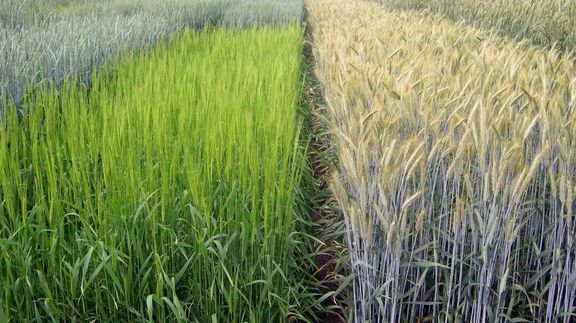
Publishing model
We combine the advantages of organizationally supported open-access articles with those of the "pay on demand" procedure.
Journal of Plant Diseases and Protection is a Transformative Journal (TJ). Once the article is accepted for publication, authors will have the option to choose how their article is published:
- Traditional publishing model – published articles are made available to institutions and individuals who subscribe to Journal of Plant Diseases and Protection or who pay to read specific articles.
- Open Access – when an article is accepted for publication, the author/s or funder/s pay an Article Processing Charge (APC). The final version of the published article is then free to read for everyone.
Journal of Plant Diseases and Protection is actively committed to becoming a fully Open Access journal. We will increase the number of articles we publish OA, with the eventual goal of becoming a fully Open Access journal. A journal that commits to this process is known as a Transformative Journal.
Find out more about Transformative Journals.
Authors may need to take specific actions to achieve compliance with funder and institutional open access mandates. If your research is supported by a funder that requires immediate open access (e.g. according to Plan S principles) then you should select the gold OA route, and we will direct you to the compliant route where possible. For authors selecting the subscription publication route, the journal's standard licensing terms will need to be accepted, including self-archiving policies. Those licensing terms will supersede any other terms that the author or any third party may assert apply to any version of the manuscript.
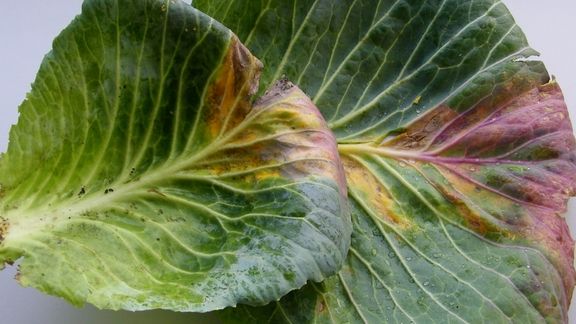
Reviewer Acknowledgements
Our editors and reviewers work voluntarily to ensure the quality of published scientific results. We expressly acknowledge and appreciate their contributions.
A scientific journal’s greatest responsibility is to ensure that all contributions accepted for publication are rigorously but fairly reviewed.
We gratefully acknowledge the valued support of the scientists who have reviewed papers for Journal of Plant Diseases and Protection throughout the year.
We work with Publons to give our expert peer reviewers official and seamless recognition for their contribution to research.
Learn how you can add your peer reviews to your Publons profile here: https://www.springernature.com/gp/reviewers/publons.
Our peer review system is also integrated with ORCID, allowing our reviewers to share their discoveries and receive recognition for their reviewer efforts.
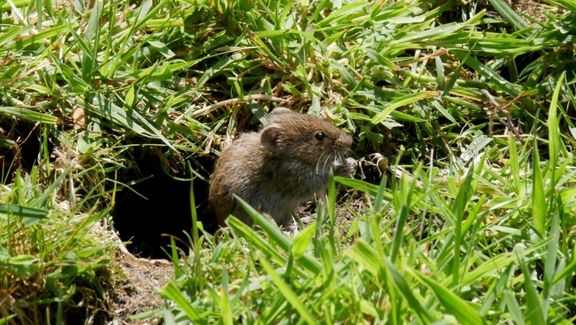
JPDP - an educational platform
JPDP educates young scientists: in tandems with experienced experts, they learn to write scientifically, review, and act as editors.
The German Society for Plant Protection and Plant Health (DPG) uses JPDP as a training platform for its emerging talents. Experienced editors involve young scientists in the review process and teach them the methodology of reviewing. This simultaneously provides mostly doctoral candidates with an efficient and practical understanding of how to structure their own manuscripts. Exceptional young Ph.D. graduates then go through a further training phase where they learn how journal editors in their field connect and utilize the network for engaging reviewers. This way, young scientists can even grow into the role of the Editor-in-Chief.
JPDP encourages all its editors to use the journal as a resource for their own doctoral candidates, thereby making the high value of their nonprofit and unpaid work tangible within their own research groups.
DPG believes that through these efforts, it makes an important contribution to maintaining a high scientific standard in the evaluation of scientific publications
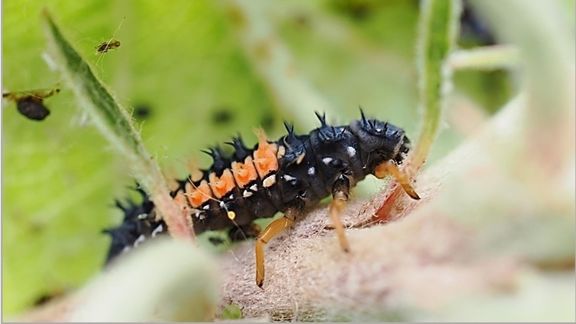
History
The history of JPDP is the history of the oldest German scientific journal for plant protection.
Historical Background of the Journal
The Journal of Plant Diseases and Protection (JPDP) is a hybrid journal, owned by the Deutsche Phytomedizinische Gesellschaft e. V. (DPG) - the German Society of Plant Protection and Plant Health. JPDP addresses all aspects of plant pathology and protection as well as emerging pests and diseases. The journal has a remarkable history: it is one of the oldest plant science journals in Europe and was founded in Germany in 1891.
There is no doubt that Germany was a fertile place for the development of plant sciences at this time. J. G. Kuhn published the first textbook of plant pathology here in 1858, entitled "The Diseases of Cultivated Crops, their Causes, and their Control," and it's worth noting that Darwin's famous work, "The Origin of Species," saw the light of day only a year later in Britain. When you look at the title page of the first edition from 1891, published by Verlag Eugen Ulmer KG, and consider the names on the first editorial board, it's amazing that it was already an "international" board with scientists from the Americas, Australia, Europe, and even Java. It's hard to imagine how difficult it must have been then to stay in touch with like-minded individuals. The journal has a long history, and its title changed several times over the years until it was finally renamed the "Journal of Plant Diseases and Protection" (JPDP) in 2006 and also became the official publication of the Deutsche Phytomedizinische Gesellschaft e. V. (DPG).
In 2016, Springer took over the distribution of this renowned publication, documenting 125 years of "plant protection" in Germany. It not only documents the rise of plant protection as a discipline but also the increasing complexity of this scientific field. Today, the journal is led by Dr. Falko Feldmann and Noemi Messmer, both supported by Dr. Christian Carstensen.
Present Days
The journal has a strong identity as the official publication of the DPG. The editors-in-chief are supported by a carefully selected large editorial team. The journal's editorial team meetings are usually well-attended: 54 editors were present at the last virtual editorial team meeting in January 2023.
With Springer, we began publishing the journal with the first issue in 2016, and since then, the journal's numbers have increased significantly:
- Submissions have tripled from 2016 to 2021.
- Publications have doubled from 2016 to 2021.
- The Impact Factor has grown from 0.485 in 2016 to 1.847 in 2021.
- The journal's usage numbers have also increased, with more than 145,000 article downloads in 2022, a 72% increase over the previous year.
What's Next
The journal has undergone many changes in recent years. As mentioned before, it was published by Ulmer until the end of 2015, and then Springer Nature took over the distribution. It was added to a new portfolio for plant pathology in late 2019.
The dedicated editorial team will help the journal continue to grow and support its active community of scholars, in part thanks to the "topic collections" that the journal has started to publish. This change was made because articles published in "special issues" were, in some cases, not recognized as regular scientific papers by some universities
